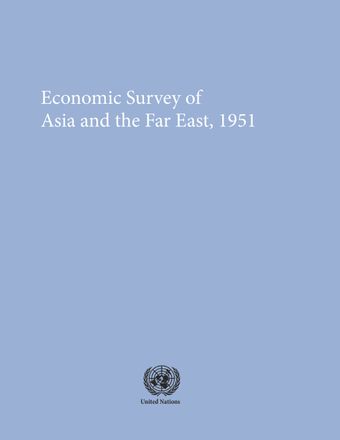Expansion of imports

- Author: United Nations Economic and Social Commission for Asia and the Pacific
- Main Title: Economic and Social Survey of Asia and the Far East 1951 , pp 103-123
- Publication Date: December 1951
- DOI: https://doi.org/10.18356/ced362a2-en
- Language: English
The total value of imports of ten countries in the region, after a setback in late 1949 and in 1950, increased sharply in 1951 to $7,000 million, 50 per cent above the previous year’s level. This represented a third stage of changes in the region’s imports during the post-war years. In the first stage, i.e., from the end of the war to the end of 1948, imports of the region, in response to pent-up demand, increased rapidly, serving to reduce inflation and speed up rehabilitation and reconstruction. Exports being low on account of the slow recovery of production and transport, this increase in imports was made possible by the foreign balances accumulated during the war, United States aid, and the reduction in payments for foreign indebtedness and foreign investment yields. During the second stage, i.e., from 1949 up to late 1950, imports of the region stopped expanding and there was even a substantial reduction in the early part of 1950. This was partly because the bulk of pent-up demand had been satisfied and partly because foreign exchange reserves, especially dollars, had been reduced to a low level; consequently, stricter restrictions were imposed on imports, especially from the dollar area. The increase of imports since mid-1950 ushered in the third stage.
-
From This Site
/content/books/9789210599405s003-c002dcterms_title,dcterms_subject,pub_keyword-contentType:Journal -contentType:Contributor -contentType:Concept -contentType:Institution105


